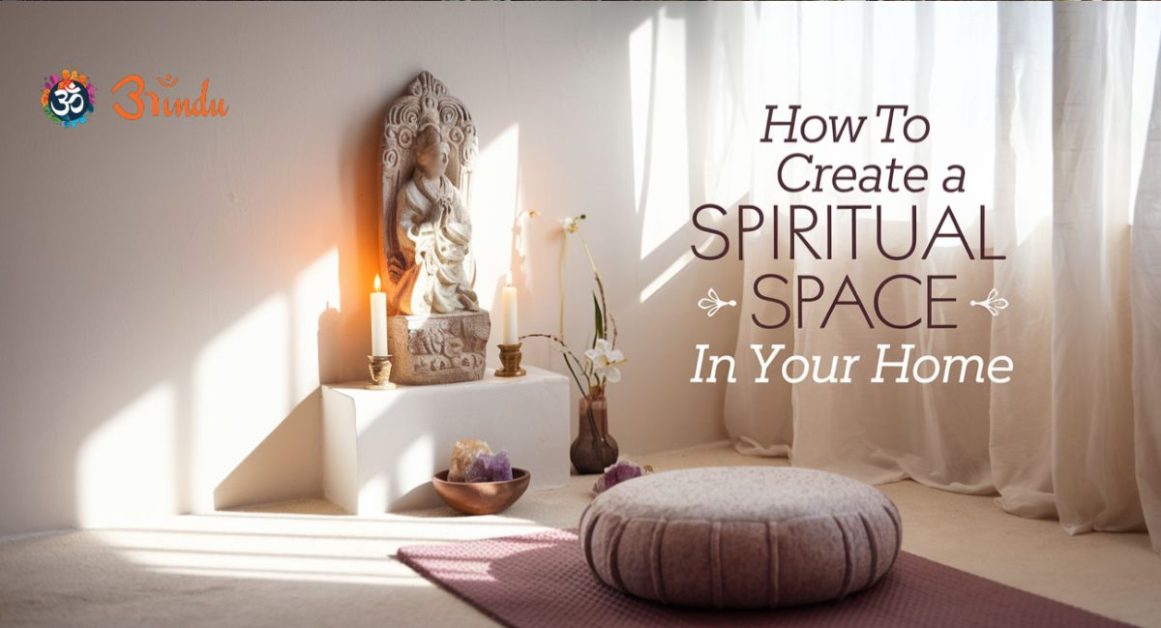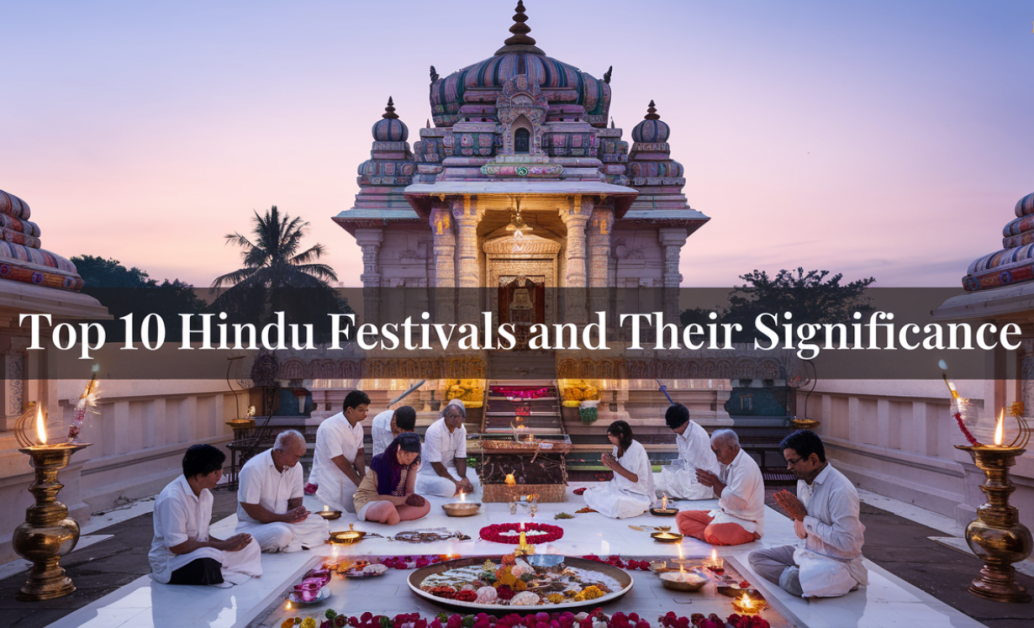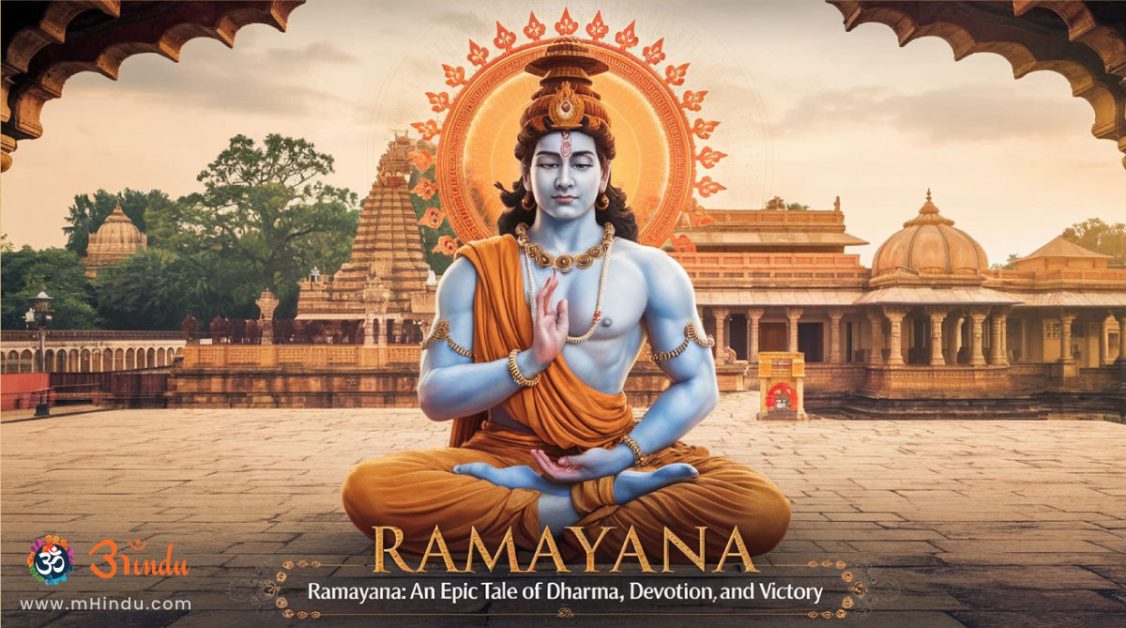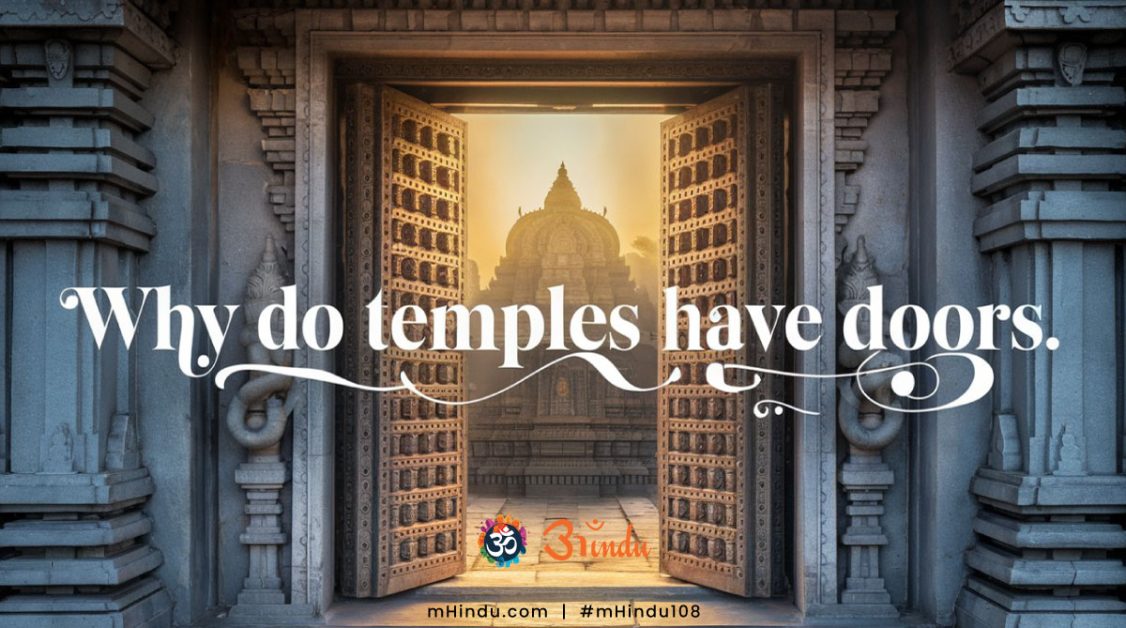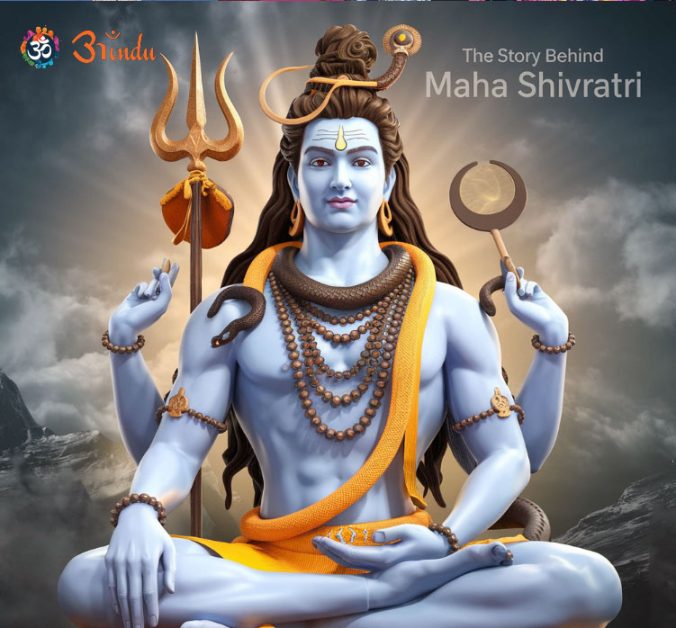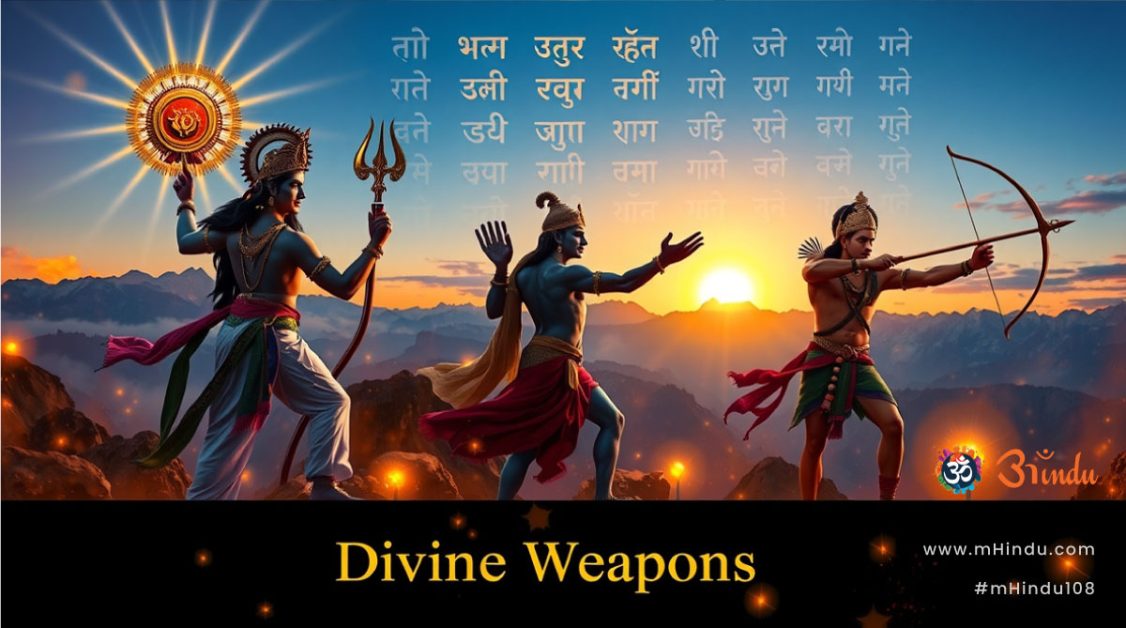
When Thunder Became Dharma – The Mythic Call of Divine Weapons
In the hush of Himalayan peaks or the sacred silence of temple corridors, the echoes of ancient battles still linger. Not in bloodshed—but in shlokas, stories, and symbols. They speak of divine weapons, of mighty astras and enchanted shastras that were more than tools of war; they were extensions of dharma, karma, and cosmic will.
Explore Blog Content
ToggleThe divine weapons in Hinduism are not mere relics of fantasy. They are spiritual archetypes—each born from a mantra, each guided by divine consciousness. Unlike the cold steel of modern warfare, these astras and shastras were manifestations of cosmic energy. They were summoned not just by hand, but by the soul aligned with purpose, by those who upheld dharma.
Take the Brahmastra, feared for its ability to destroy the universe, or Sudarshana Chakra, which returns to the hand of Bhagavan Vishnu after cutting through all evil. These are not just weapons—they are metaphors, shaktis, and divine laws given form.
🕉 Sloka Reference:
“Dhanurvedaṃ hi Vedānāṃ ṛgvedaḥ prathamaḥ smṛtaḥ |
Dhanurvede ‘strashāstraṃ tu bhagavān nārayoditaḥ”
(Translation: Among the Vedas, Rigveda is first remembered, and the science of warfare—the Dhanurveda—was revealed by Bhagavan Narayana.)
This blog journeys into the heart of Sanatan Dharma’s celestial battlefield—not to glorify violence, but to illuminate how weapons were divine responsibilities, how destruction too could serve preservation.
The Spiritual Science of Astras and Shastras
To the uninitiated, divine weapons in Hinduism may seem fantastical—missiles launched by chants, arrows that track adharma, or chakras that dance through time and space. But these weapons weren’t just destructive; they were governed by conscious intention.
What is the difference between Astra and Shastra?
Shastras (शस्त्र) refer to physical weapons like swords, maces, or bows. They are wielded with physical force. Astras (अस्त्र), on the other hand, are celestial weapons invoked through sacred mantras, granted by devatas, often passed through divine initiation.
For instance, Arjuna’s Pashupatastra—gifted by Lord Shiva—could only be summoned when the warrior’s soul matched the sanctity of the weapon. This sacred balance reminds us that power must follow purity.
How were divine weapons obtained?
Only the most penance-filled souls or dharmic warriors were blessed with such power. Through intense tapasya, humility, and surrender, sages and warriors received these astras from the Trimurti or Devis. Unlike modern tools, ownership of these weapons was spiritual—dependent on adhikāra (worthiness).
🕉 Sloka Reference:
“Yadā yadā hi dharmasya glānir bhavati bhārata,
Abhyutthānam adharmasya tadātmānaṃ sṛjāmyaham.”
(Bhagavad Gita 4.7)
(Meaning: Whenever dharma declines and adharma rises, I manifest myself.)
Weapons in Hinduism aren’t about war. They are about restoring balance.
Were all astras equally powerful?
No. Every astra had unique characteristics. The Brahmastra was the most potent—capable of annihilating worlds. Agneyastra invoked fire, Varunastra summoned water, and Vayavastra unleashed storms. Each was aligned with specific elements and cosmic functions.
Did divine weapons have a conscience?
Yes, metaphorically. They could not be misused without karmic consequences. Even in the Mahabharata, Karna hesitated to use Nagashtra without righteous cause. These weapons often turned against the unworthy wielder.
Divine Weapons of the Mahabharata – Dharma on the Battlefield
The Mahabharata is not just a war epic—it’s a moral universe in motion. Each weapon tells a story, each battle reflects a deeper battle of consciousness.
Among the most famous is the Brahmastra, used or almost used by both Ashwatthama and Arjuna. This astral weapon, created by Brahma himself, symbolized total annihilation—used only when dharma itself was endangered.
Why did Arjuna not use the Brahmastra in the Kurukshetra war?
Despite being granted the Brahmastra, Arjuna refrained from using it. Why? Because the war was about justice, not destruction. He knew that deploying such a weapon could devastate not just the enemy—but the very Earth itself.
Ashwatthama’s curse – a lesson on misuse of power:
When Ashwatthama hurled the Brahmastra at Uttara’s unborn child, it was an act of vengeance, not dharma. Krishna stopped it, but cursed Ashwatthama to wander the Earth in agony. It remains a warning: power without dharma invites doom.
🕉 Sloka Reference (Mahabharata):
“Na hi śūrā bhavantyete krodhena paridevitāḥ |
Śaktasya śāntaye śauryaṃ yad vīrasya parāyaṇam ||”
(Real heroes do not lament in anger. True valor lies in peace when one holds power.)
How many divine weapons did Arjuna possess?
Arjuna received numerous weapons: Gandiva bow, Pashupatastra, Brahmastra, Agneyastra, and many others. But he used them sparingly, guided by Krishna’s wisdom and his own inner dharma.
Which was Krishna’s weapon in Mahabharata?
Though Krishna vowed not to pick weapons, He wielded the Sudarshana Chakra symbolically. In moments of crisis, His mere presence was weapon enough—guiding fate through divine will.
Weapons of Ramayana – Divine Arsenal of Lord Rama
If the Mahabharata was the theatre of moral complexity, the Ramayana was the embodiment of Maryada Purushottam—an ideal life lived through dharma. Lord Rama’s use of divine weapons is neither flashy nor excessive. It is precise, restrained, and deeply symbolic.
The Bow of Shiva – Pinaka Dhanush
The swayamvar of Devi Sita was no ordinary contest. Kings from across Bharata came to lift the Pinaka Dhanush, Shiva’s divine bow. Only Rama could not just lift but also string and break it—signifying that divine strength arises from inner restraint, not brute force.
This moment wasn’t just about marriage—it was the acceptance of dharma as a life partner.
The Brahmastra – Used Twice with Gravitas
Rama uses the Brahmastra twice in the Ramayana:
- Once against Mareecha, the demon who disguised himself as a golden deer.
- And finally, to defeat Ravana, the ten-headed king of Lanka.
Both times, it was invoked only after exhausting all other means. The message was clear: even the most powerful must seek peace before war.
🕉 Sloka Reference (Valmiki Ramayana):
“Dharma eva hato hanyāt, sa dharmo yadi pālitaḥ |
Na hanyate hato dharmo, dharmaḥ rakṣati rakṣitaḥ ||”
(Translation: Dharma, when upheld, protects. But when violated, even the righteous may face ruin.)
Lord Rama’s arsenal also included:
- Agneyastra – Fire weapon
- Varunastra – Water weapon
- Vayuastra – Wind-based
- Garudastra – Effective against nagas (snakes)
- Narayanastra – Gifted by Vishnu, never to be used lightlyPeople Also Ask:
What made Lord Rama’s weapons divine?
It wasn’t just their origin—it was Rama’s intent. Every weapon reflected his balance of compassion and justice, reminding us that a weapon without virtue is a curse, not a blessing.
Why didn’t Rama use Brahmastra immediately on Ravana?
Rama gave Ravana several chances to surrender, even after killing his own soldiers. Dharma must be upheld even against the worst enemy. Rama’s restraint is the greatest divine weapon of all.
The Symbolism Behind Each Astra
Every divine weapon in Hinduism is a symbol wrapped in a story. Unlike modern warfare, where weapons are neutral tools, these astras and shastras had spiritual allegory, elemental force, and moral consequence. Let’s uncover their meanings.
Sudarshana Chakra – The Spinning Dharma
The discus of Vishnu is not just a circular blade—it represents the cycle of karma, the eternal dharma that protects the righteous and destroys chaos. It’s swift, decisive, and returns only to the deserving.
In the Mahabharata, Krishna uses it to protect Draupadi and end injustice without raising armies.
Brahmastra – The Power of Destruction and Creation
Bestowed by Brahma, this weapon contains the energy to obliterate the world. But its spiritual meaning lies in transformation. Just like Shiva’s Tandava destroys to recreate, the Brahmastra resets cosmic balance.
It warns us: creation without destruction leads to stagnation. Destruction without compassion leads to doom.
Nagapasha – The Binding Karma
Used by Indrajit (Meghnad) in the Ramayana to bind Rama and Lakshmana, the Nagapasha symbolizes the entanglement of karma. Only devotion (via Garudastra) can release one from it.
🕉 Sloka Reference (Vishnu Purana):
“Yadā sattvaṁ prakāśakaṁ śāntaṁ bhavati bhārata,
Tadā jñānaṁ pravartate dharmeṇa saha saṁyutam.”
(When sattva dominates, knowledge and dharma awaken together.)
In essence, each divine weapon reflects:
- Elemental energy (fire, wind, water, earth)
- Psychic forces (ego, fear, anger, wisdom)
- Dharmic duties (protection, restraint, justice)
Why do Hindu gods have so many weapons?
Because each god symbolizes multiple aspects of the universe. Their weapons represent cosmic functions: Vishnu preserves, Shiva transforms, Durga protects. Their astras are extensions of these divine duties.
Can divine weapons be symbolic today?
Absolutely. The Sudarshana Chakra reminds us to cut through confusion. The Brahmastra warns us to use power wisely. These weapons are spiritual lessons wrapped in epic tales.
Modern Relevance – What These Weapons Teach Us Today
In today’s world of artificial intelligence and nuclear power, what do divine weapons in Hinduism have to teach us?
Surprisingly—a lot.
These weapons were granted only to the spiritually evolved, those who practiced tapasya, who stood for righteousness. They teach us that true power must be earned through discipline, not demanded by desire.
The Inner Sudarshana – Disc of Clarity
We all face inner demons—anger, fear, ego, jealousy. Invoking the Sudarshana Chakra today means cultivating mental clarity, ethical strength, and slicing away illusion. It is the inner technology of Sanatan Dharma.
Brahmastra of Thought
Imagine if thoughts could destroy. In a way, they do. Today, social media posts and ideologies can spark wars or peace. The Brahmastra teaches us that powerful tools must be used only after deep reflection.
Ram’s Bow – Discipline over Desire
Lord Rama did not fire his weapons for pride. He waited, he forgave, and only when dharma was at stake, he acted. That is the model we need today in corporate life, relationships, and leadership.
🕉 Sloka Reference (Bhagavad Gita):
“Karmanye vadhikaraste, Ma phaleshou kada chana
Ma karma phala hetur bhoor, Ma te sangostva akarmani”
(You have a right to perform your prescribed duty, but not to the fruits of action…)
The modern war is not of kingdoms—but of truth vs confusion, ethics vs ease, responsibility vs escape.
Can children be taught about divine weapons?
Yes, through stories and simplified metaphors. They inspire moral values, cultural pride, and spiritual reflection—without glorifying violence.
Are these weapons still “real”?
Whether myth or metaphor, they’re spiritually real. They shape values, behaviors, and dharmic choices for millions. In Sanatan Dharma, stories are timeless truths.
Summary: The Eternal Power of Divine Weapons in Hinduism
From the mighty Brahmastra that could scorch the heavens, to the Sudarshana Chakra that danced through evil to restore dharma, the divine weapons in Hinduism are more than stories. They are cosmic metaphors, spiritual teachings, and moral compasses wrapped in the grandeur of epics.
What do they truly represent?
- Astras were born not from war—but from wisdom, mantra, and surrender.
- Shastras were not tools of chaos—but instruments of justice in righteous hands.
- Every weapon had a soul, a dharma, a consequence. Misused, they cursed the wielder. Rightly used, they preserved the world.
Their real power was not in the destruction they caused, but in the balance they maintained—between action and restraint, courage and compassion, strength and humility.
They whisper even today—from temple walls, from bedtime stories, from yajnas and slokas:
🕉 “Be powerful, but be pure. Be fierce, but be fair. Be a warrior—not of ego, but of dharma.”
These stories continue to shape generations—not just to remember divine battles, but to fight our own inner wars, ethically and spiritually.
As we walk forward into a tech-heavy, fast-changing world, the astras and shastras of Sanatan Dharma remind us:
🕯 True power lies in character, clarity, and cosmic connection.
Let the weapon you wield be your viveka (wisdom) and shraddha (faith).
FAQs: Divine Weapons in Hinduism
1. What are divine weapons in Hinduism?
Divine weapons in Hinduism are celestial tools granted by gods, invoked through mantras, and used by spiritually evolved warriors to uphold dharma. They’re known as astras and shastras.
2. What is the difference between astra and shastra?
Astras are invoked by chants (e.g., Brahmastra), while shastras are physically wielded weapons (e.g., bows, swords). Astras are divine in origin and require spiritual eligibility.
3. How many astras did Arjuna possess?
Arjuna possessed multiple divine weapons like Brahmastra, Pashupatastra, Agneyastra, and more, gifted by gods due to his dharmic character and intense penance.
4. Why did Rama use Brahmastra on Ravana?
Rama used the Brahmastra as a last resort to end Ravana’s adharma. It symbolizes the dharmic principle that great power must only be used after all peaceful efforts fail.
5. What does the Sudarshana Chakra symbolize?
The Sudarshana Chakra represents the wheel of dharma, cosmic justice, and divine clarity. It is a powerful metaphor for karma, time, and destruction of ignorance.
6. Can divine weapons still exist today?
Not physically, but spiritually they exist as inner disciplines. Sudarshana symbolizes focus, Brahmastra symbolizes deep intent, and so on.
7. Were any divine weapons misused?
Yes, like Ashwatthama’s misuse of Brahmastra led to his eternal curse. It teaches that power without dharma results in downfall, even for great warriors.
8. What can children learn from Hindu weapons?
They teach moral responsibility, cultural pride, and spiritual symbolism. They are tools to understand dharma, karma, and cosmic balance in story form.


